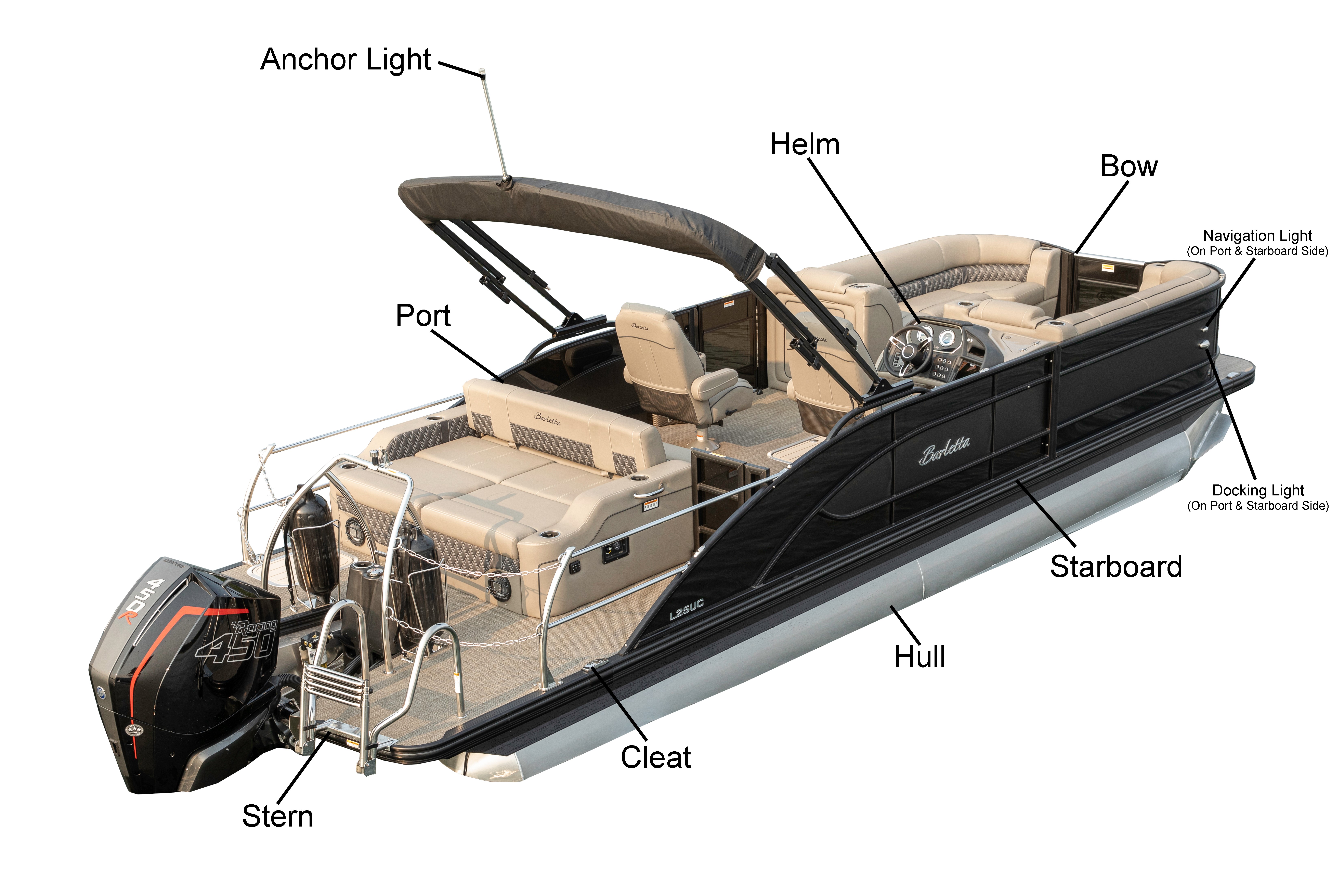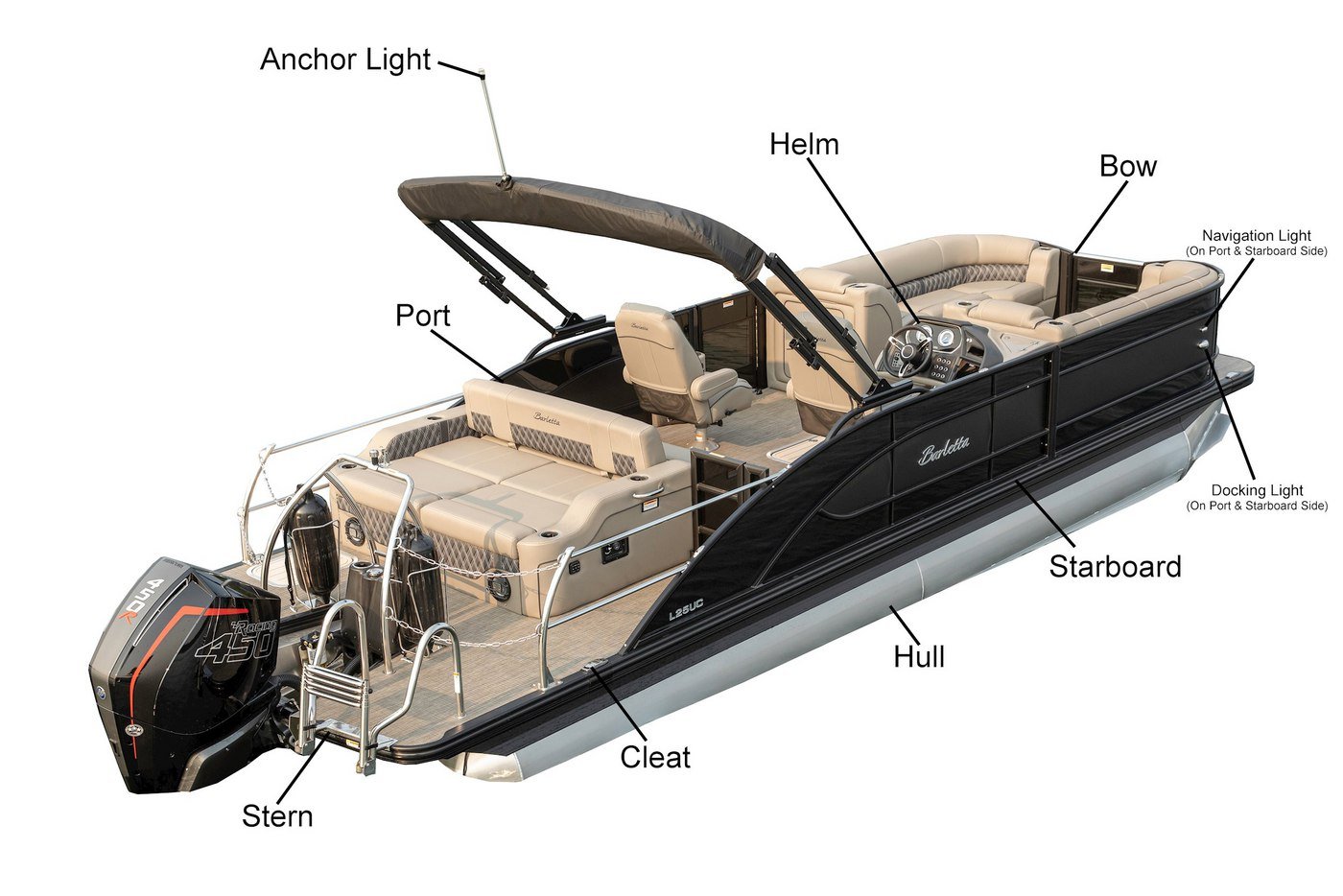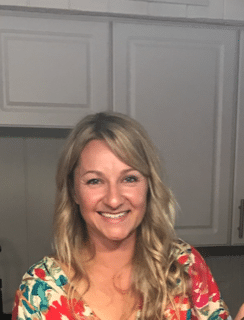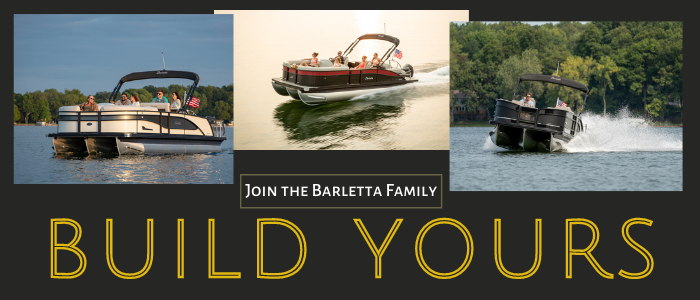Top 20 Boating Terms Every Boater Should Know
If you’re a recreational boater like me, you should know that there’s an entire vocabulary that goes along with boating. Knowing the lingo can help you be aware of your surroundings while captaining your ship.
Now, I’m not talking about navigating your course by starlight. I’m talking about general terms boaters use when referring to the vessel itself or just terms you should know while underway or parking.
Do you know which side of the boat is the port side and which is the starboard side? Do you know the difference between a mooring cover and a travel cover? Knowing the most common boat terms will pay off while you’re on the water.
Here are 20 common boating terms every captain should know.
|

1. Hull
The hull is the bottom part of the boat that sits partially in the water. On a pontoon boat, the hull is made of pontoons and a frame on which the sides and floor sit. With a V hull boat, the hull is made of fiberglass and is in the shape of a V.
2. Bow
The bow of the boat refers to the most forward part of the hull or the front of the boat. If the boat has an open bow, you will typically find seating in this area. If the bow is closed, there is most likely a cuddy cabin below deck.
3. Stern
The stern of the boat refers to the rear of the boat. Most boats will have seating, a swim platform, a ladder, and an engine located in the stern.
4. Helm
The helm of a boat is the area where the steering wheel is located. Typically accompanied by a series of controls, the helm is where the captain operates the boat.
5. Port
When looking forwards at the bow, the port side is the left-hand side of the boat. The red sidelight will be located on the port side. An easy trick to remember that port is left is by counting the letters. The words port and left both have four letters in them.
6. Starboard
When looking forwards at the bow, the starboard side is the right-hand side of the boat. The green sidelight will be located on the starboard side.
7. Transom
The transom is the area of the boat where the motor is attached. The transom is located on the stern of the boat and is typically made of metal on pontoon boats.
8. Aft
Aft simply means towards the rear or stern of the boat.
9. Forward
Forward is referring to the area towards the front, or bow, of the boat.
10. Underway
A boat is underway when not a dock or at anchor. If the vessel is floating, drifting, or in motion using the motor it would count as underway.
11. Cleat
There’s a couple of places you can find a cleat and that’s on the boat itself or on the dock. A cleat is the metal fastener you would use to tie up a dock line or anchor line. There are many different ways to tie a cleat so we’ve made a how-to video demonstrating the most common way to do it.
12. Trim
To trim the motor means to move it up and down. You can perform this function using a button located on the throttle of your boat. This button usually has an up and down arrow on it and is located in a place where your right thumb can easily reach it while your hand is on the throttle.
There are two main reasons you will trim the engine. When in shallow water at low speeds, you will trim the motor up to protect the lower unit from hitting the ground. You can also use the trim function for optimal engine performance.
13. Bilge Pump
Most recreational boats will have some sort of bilge pump built into the hull that are vulnerable to collecting water. Some bilge pumps run automatically when they sense water and some have to be turned on by a switch at the helm. The bilge pump will clear any standing water from the compartment it’s located in, which is critical for the buoyancy of a boat.
14. Navigation Light
The term navigation light refers to all of the lights on a boat that are used while operating at night. Recreational boats will have a stern light, masthead or anchor light, and sidelights. Some powerboats such as a pontoon, combine the stern light and the masthead by having a light on the top of the bimini that can be seen from all angles which is called an anchor light.
These lights have two main functions. One is to make your boat visible when operating at night. The other is to show who has the right away when two boats approach each other. The sidelights are red and green and indicate who has the right away. If you’re approaching a boat and see the red light, you do not have the right away. If you see green, you can proceed.
15. Anchor Light
This light can be found on any type of boat and should be used when the boat is anchored at night. You will find this light, sometimes referred to as a masthead light or stern light depending on the vessel, on the highest point of the boat or off the stern.
For example, the anchor light on a pontoon boat is located on top of the bimini. When anchored at night, the light needs to be visible at every angle from far distances.
16. Docking Light
Some recreational boats will have docking lights. This is typically the brightest light or set of lights on the boat and should only be used when docking at night. It is illegal to have the docking lights on while underway because they’re so bright they can be a distraction to other boaters. Doing so would be like driving a car at night with the high beams on.
17. Impeller
The impeller is a component inside all motors that plays a critical role in functionality. The water pump impeller is a part inside the engine’s lower unit that’s made out of rubber. It is the pump that pushes water up into the engine to cool it off then discharges it back out.
On an outboard motor, you will see a small stream of water coming out of the motor while it runs, that’s the impeller pump doing its job. If your boat is overheating, there could be an issue with the impeller.
18. Mooring Cover
The mooring cover also referred to as a playpen cover, will typically come with the boat from the factory. This is the main cover one would use while the boat is docked or in storage. This type of cover is not made to travel down the road or stay on the boat while underway.
It’s main purpose is to keep the boat clean by protecting the furniture and flooring keeping it as dry as possible. Remember, in heavy rains the boat will still get somewhat wet as this cover is water-resistant, not waterproof.
19. Travel Cover
A travel cover is the cover one would use if they plan on traveling long distances with their boat. Say you plan on pulling the boat across the country to experience different bodies of water. You would want to either pull the boat without a cover on it or use a travel cover.
Travel covers are made to have a low profile because it’s more conducive to traveling down the road. Unlike a mooring cover that is tented as high as possible, the lower profile is more aerodynamic and is less prone to damage done by high winds.
20. PFD
PFD stands for personal flotation device. This term covers every type of flotation device one would use including life jackets and throwable flotation items. PFDs should be present on any vessel, in most cases, it is the law.
Boating Vocab 101
These 20 terms cover most of what a recreational boater needs to know. Knowing these terms and being able to use them while boating will play a part in keeping those on board as well as those on neighboring boats safe.
If you’re interested in educating yourself on boater safety, I strongly suggest taking a course and getting your boating license. Operating a boat is not like operating a car, there are rules of the water that you will not know unless you educate yourself.
Safety should be your first priority as a boater and I recommend knowing your local and state laws before ever hitting the water. A happy boater is a safe boater so do yourself a favor and exhaust your options for boaters education if you plan on operating a vessel of any kind.



